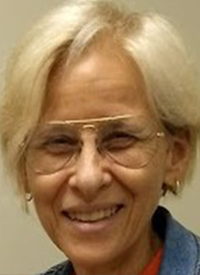Opinion: The Good Nurse Brings Safe Narcotic Handling to the Forefront of Nursing Minds
Sometimes nurses inappropriately handle high-risk medications. It is important that other nurses, especially those who work in pain management, hold colleagues accountable to promote patient safety.
Debi Fischer, MSW, BSN, BA, LCSW, RN

Pain management is essential in cancer care, especially in surgical oncology settings. Oncology RNs may administer narcotic pain killers to their patients on either a prn (“pro re nata” or as needed basis) or a scheduled basis. Unfortunately, this also opens the door to nurse abuse of high-risk medications, and other issues. Although the popular Netflix series The Good Nurse has brought attention to a specific nurse intending to cause harm, there are statistics which suggest that inappropriate handling of high-risk medications is a relevant problem for many institutions.
The rate of substance abuse in the United States is 6% to 8%.1 According to the American Nurses Association, this figure has held true for the past 3 decades, and the percentage rate is comparative to the substance abuse rate in the country overall.2,3 However, the general population does not typically have access to the same medications that nurses have access to.
RNs must chart on the electronic medication administration record, MAR, that the medication was given to their patient. However, it is possible to pretend to give an intravenous (IV) push medicine by trading it for saline or sterile water. The liquid pain medication can be extracted with a needle and compatible flushes and vials are readily available in the hospital. This scenario happens despite the advent of the computerized drug dispensers, known as the Pyxis or Omnicell.
Drug diversion is defined as when a drug, in this case a narcotic, does not reach the patient. It is then used by the nurse, or may even be sold by the health care professional. Drug diversion includes drug theft, or tampering (adulteration or substitution). 2,3,4 Moreover, it is a felony that can result in a nurse’s criminal prosecution and loss of license.
What happens when a nurse tampers with narcotics? First of all, the patient suffers. Their pain is not controlled. The patients on the floor or unit experience what is described as “inadequate care from impaired health care workers.”4 Patients may also be at risk of infections from contaminated syringes.”4 The hospital or health care setting does not escape unscathed neither. They can accrue fines and may lose Medicare funding. The nurse with substance abuse disorder may also experience hardship as he or she could find themselves facing both legal and medical consequences of their addiction.
I work in surgical oncology and sometimes a dose is ordered that is less than what is dispensed. There are cameras in the med room to document what has transpired. Despite this safeguard, drug diversion continues.1 When a nurse signs off on a waste that was not witnessed, a note in the system can be added and an incident report can be created as a prompt for patient safety concerns not as a punitive measure.4 One potential solution to this problem may lay with pharmacy—if wider dose ranges are available it may become more difficult to make excuses for differences between ordered and administered doses.4 Having a designated bin where all witnessed narcotic waste is discarded is another potential strategy. In any case, unapproved Environmental Protection Agency methods of disposing drugs—such as discarding meds down a sink or in a sharps container—must be avoided.4
I am in Florida, and there is a mandatory reporting law in this state for nurses with substance abuse problems. Different states have individual reporting requirements, so these processes can depend on where you are employed, but in Florida, hospital or medical facilities should report nurses suspected of experiencing substance abuse disorder to the Department of Health or Intervention Project for Nurses (IPN). The IPN was created in 1983 with the purpose of protecting the public by helping nurses with substance abuse disorders. The IPN gives them the tools to cope with substance abuse.5 The IPN is contracted by the Florida Department of Health to help nurses through “state-wide education, support and monitoring to nurses with impairing conditions such as substance use disorders.”5 Florida statute 456.076 is the legal basis for this project.
The Good Nurse
The series The Good Nurse, streaming on Netflix, based on the book by Charles Graeber tells the story of convicted serial killer Charles Cullen, RN.6 He repeatedly took out Digoxin and Insulin and spiked IV bags with these high-risk medications. Cullen would also take out medication and then cancel the removal before closing the Pyxis. A nurse on the unit, one of his coworkers and friends, risked her safety to pull all his Pyxis and Cerner records—which showed his documentation—to bring him to justice. He is now serving multiple life sentences.
These issues and the buzz around this series, The Good Nurse, suggest that inappropriate handling of high-risk medications is an issue which is not going away soon. This has been the topic of the day in many nurses’ stations nationwide. The oncology nurse should be aware of the issues regarding impairment to effectively function in the healthcare setting.
References
- Pavlovich-Danis SJ. The nurse with substance use disorder: moving past the “impaired” nurse label. June 18,2019. Accessed November 28, 2022https://cedirect.continuingeducation.com/Aspx/CourseContent.aspx?uniqueid=38817892&topicid=601&page=1&IsAnthology=1
- Webster A. Drug and alcohol rehab for nurses near you. American Addition Centers. September 14, 2022. Accessed December 5, 2022. https://bit.ly/3PhjcYx
- Alunni-Kinkle S. Identifying substance use disorder in nursing. Nurs Manage. 2015;46(12):53-54. doi:10.1097/01.NUMA.0000473512.38679.ca
- Nyhaus, J. Drug diversion in healthcare: prevention and detection for nurses. American Nurse Journal. 2021;16(5):24-27.
- About us. IPN: Intervention Project for Nurses. March 2022. Accessed November 28, 2022. https://bit.ly/3XXbXIS
- Nicholson A.‘The Good Nurse’ review: Bad medicine. The New York Times. October 27, 2022. Accessed November 28, 2022. https://nyti.ms/3VMSzMS


